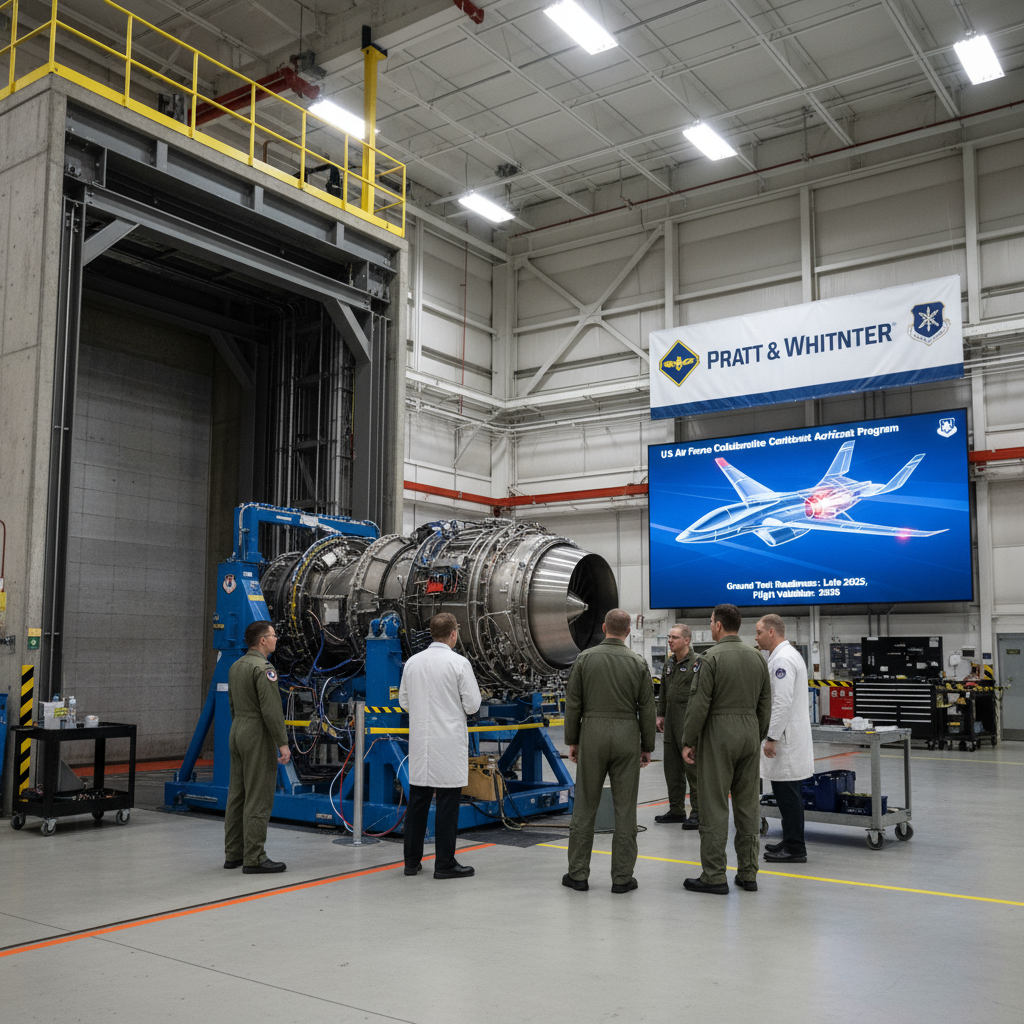Physical Address
304 North Cardinal St.
Dorchester Center, MA 02124
Physical Address
304 North Cardinal St.
Dorchester Center, MA 02124
Global aviation news tracker
Global aviation news tracker

Pratt Whitney turbofans will be the heart of the US Air Force’s Collaborative Combat Aircraft program, entering ground tests in late 2025.
The US Air Force (USAF) has chosen Pratt & Whitney’s new family of small turbofan engines to power its Collaborative Combat Aircraft (CCA) effort, an optionally manned, autonomous-capable program aimed at teaming smart unmanned systems with piloted fighters. Early ground testing is scheduled for late 2025, followed by validation flights planned during 2026.
The program focuses on compact, high-performance propulsion that fits the size and mission profile of autonomous and optionally manned aircraft. Pratt & Whitney’s work will support the CCA’s goals of sensor-sharing, low-observable signatures, and long-endurance mission profiles while ensuring maintainability and serviceability in operational environments.
Smaller turbofans bring a balance of thrust, fuel efficiency, and reduced logistical footprint—key factors for expendable or attritable systems the USAF envisions. While specific engine model names were not released publicly, the timeline is firm: ground runs late in 2025 to validate core systems, then airborne validation flights in 2026 to demonstrate integration with avionics and autonomy suites.
The selection signals a major step in US defense aviation innovation, pairing an established engine maker with a next-generation combat aviation concept. Integration flights in 2026 will be watched closely by defense planners and industry partners as the USAF refines concepts of operation for unmanned teaming and attritable force multipliers.
Expect updates as Pratt & Whitney progresses through ground testing and prepares for airborne validation; these milestones will shape timelines for production readiness and potential fielding decisions in the later 2020s.